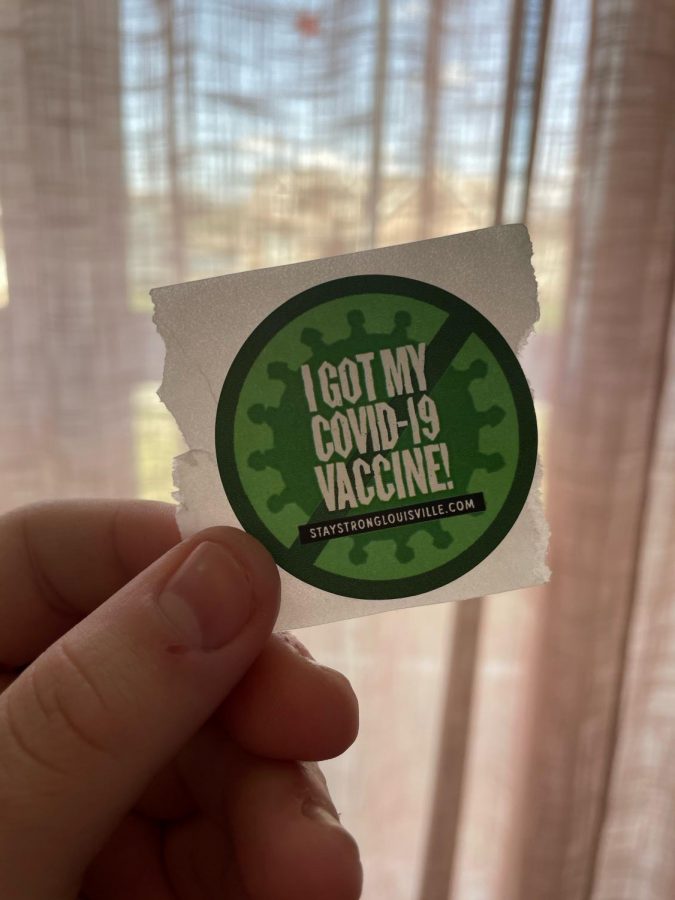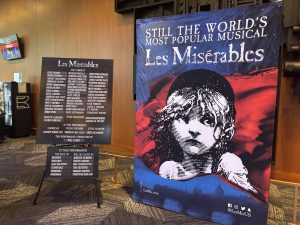Manual teachers reflect on their vaccination experience
A vaccination sticker that is received after the first dose. Photo by EP Presnell.
March 24, 2021
On Feb. 3 and March 3 Manual staff, along with many other JCPS employees, received their first and second doses of the Moderna vaccine at Broadbent Arena. Kentucky made it a priority for teachers to be vaccinated early on. K-12 educators were put in Phase 1b alongside essential workers (non-healthcare) and those over the age of 75.
JCPS scheduled both shots for teachers and AP Physics teacher Alexis Rich said the process was “super-easy.”
“I showed up to Manual at the appointed time and rode a school bus (socially distanced) to Broadbent,” Rich said, “I got the shot and they brought us back to school. I’m not sure it could’ve been done better.”
English teacher Dujana Wilson agreed that the process was easy, although the wait was a little long for the first dose.
“They were well organized; however, the wait was long. The entire process took almost two hours,” Wilson said.
Other teachers attested to this, explaining that the wait was two or more hours when receiving their first dose. However, things were drastically different at the second appointment.
Social studies teacher Randolph Wieck said his second appointment only took 30 minutes, compared to the couple hours spent waiting for his first dose. All other teachers interviewed also reported this time reduction.
“The wait to receive my second shot was much shorter than the first shot. It took a total of 30 minutes, which included the 15 minute observation period,” Wilson said.
According to the teachers, the first dose of the vaccine held less and overall more mild side effects. Michael Starling (Science) described the feeling as similar to a tetanus shot. In contrast, the second dose held a variety of after effects, ones that caused most teachers to host asynchronous classes the following Thursday and Friday.
“For the second shot, I felt every side effect and hard. I was out of commission for 36 hours and felt fatigued for two days,” Starling said.
Rich also said her side effects went away after about 36 hours.
“I had a really stiff arm from the injection, burning eyes and I was really tired. I’ve never had the flu but I imagine that’s what it feels like,” Rich said.
However, for some teachers like Dr. Wieck, the side effects are still quite present. Wieck experienced Bell’s palsy the day after his second dose. Bell’s palsy is defined by Merriam Webster dictionary as, “paralysis of the facial nerve producing distortion on one side of the face.” For most individuals, this condition is temporary.
“I have a medical waiver and prior history of Bell’s, which can be triggered by the vaccine or exposure to the virus,” Wieck said. Due to this, Wieck will not be returning to school on April 5, saying that it’s “too early.”
However, other teachers, including Wilson, Rich and Starling, are planning to return in-person.
“I feel safe going back to school, there is always a risk, but I trust my colleagues that are on the committee for Manual’s plan,” Starling said, “I will still use practices from the CDC to help keep myself and students safe.”
Rich also said she feels safe returning in-person because she’s been vaccinated, but is concerned for the safety of students who have not been.
“I hear students talk about getting together after school, going to Cardinal Town, hanging out and I am so, so worried. We’re sending a message that it’ll be safe to come to school but not effectively communicating that it’s still very risky to eat with your friends, have sleepovers or even ride in the car together,” Rich said.
She hopes that these “mixed messages” will not harm members of the student body.
Group A students are set to return to in-person April 5 and Group B on April 8. To learn more about the return to in-person school plan, click here.
Yesterday @duPontManual principal @NewmanEDU2 sent out a message to parents about new schedule options. Here are the details: https://t.co/NckR6OAqfP pic.twitter.com/Ecmh3KT8Tn
— Manual RedEye (@manualredeye) March 11, 2021








